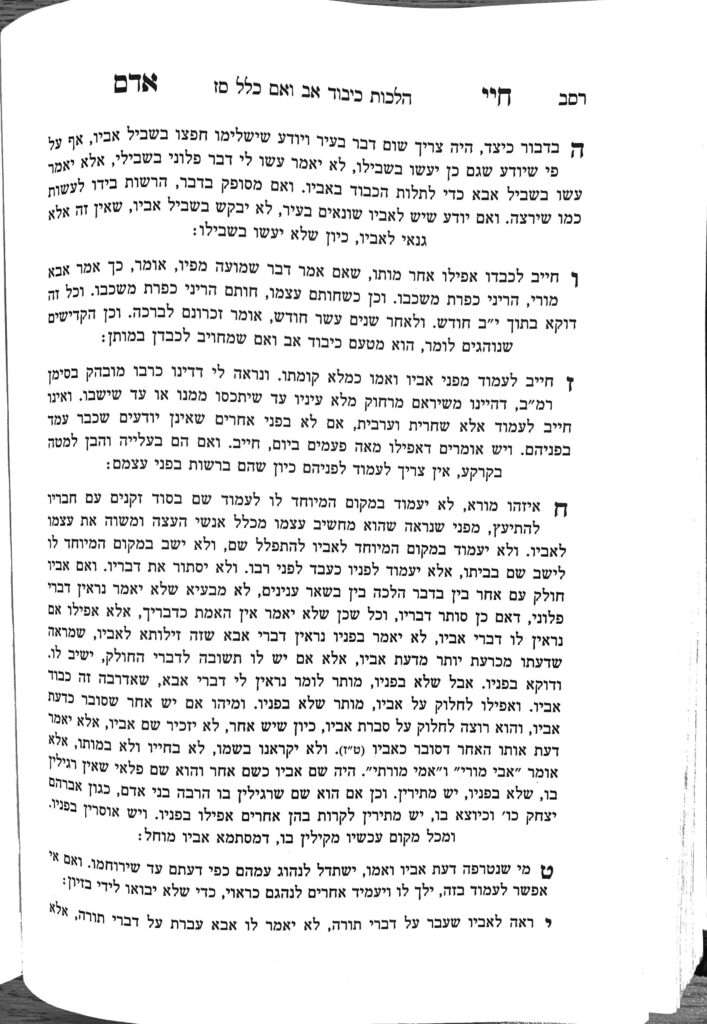We are beginning siman 7, where the Chayei Adam discusses the chiyuv of kimah, standing up. In the same way a person has a chiyuv to stand up for their rebbe, they have a chiyuv to stand up for their parents as well.
The Chayei Adam writes that one must stand up for their parents to their full height, in the same way one stands up for a talmid chochom. There are two sets of halachos regarding kimah. If one has a rav muvhak (someone from whom one learned the majority of their Torah), the talmid must stand up from the moment they see the rav, until the rav is out of eyesight or has reached his seat. A gadol hador has the same halachos as a rav muvhak. This halacha only applies when one is in the same reshus as the rebbe.
Practically, it is uncommon for a person to have a halachic rav muvhak, as most people learn their Torah from many rabbeim and rabbonim.
Regarding a regular talmid chochom or rebbe, one only stands when the rebbe is within four amos of the person.
In both cases, one does not have to wait until the rav actually sits, but once they have reached their seat, they may be seated. Therefore, if one davens in the same minyan as their rav muvhak or a gadol hador, and the rav stands up for part of davening, the tzibbur does not have to stand up, because the rav is by his place.
The Chayei Adam writes that the chiyuv to stand up for parents is equivalent to standing for the gadol hador or rav muvhak. Thus, one must stand up as soon as the parent is within eyesight.
Some of the commentaries on the Shulchan Aruch point out that the Gemara records that Rav Yosef, who was blind, would stand up for his mother when he heard her coming, because he could identify her gait. Therefore, they pasken that one has to stand up even before they see the parent, but from when any of their senses identify that their parent is coming.
Similarly, some have the minhag to place bells on the crown of a sefer torah to inform people that a sefer torah is being transported. A sefer torah has the same dinim as rav muvhak regarding standing up. By adding bells, one is able to stand up even before seeing the sefer torah.
Nevertheless, the Chayei Adam does not mention standing up before the parent is within eyesight, which indicates he does not hold of it. Rather, he holds that the chiyuv to stand up for a parent only begins when the parent comes within the eyesight of the child.
We will continue to clarify these halachos in the next shiur.
Summary
The Chayei Adam holds that the chiyuv to stand up for a parent begins when the parent comes within the eyesight of the child. The child must remain standing until the parent is out of eyesight, or until the parent has reached their seat.



